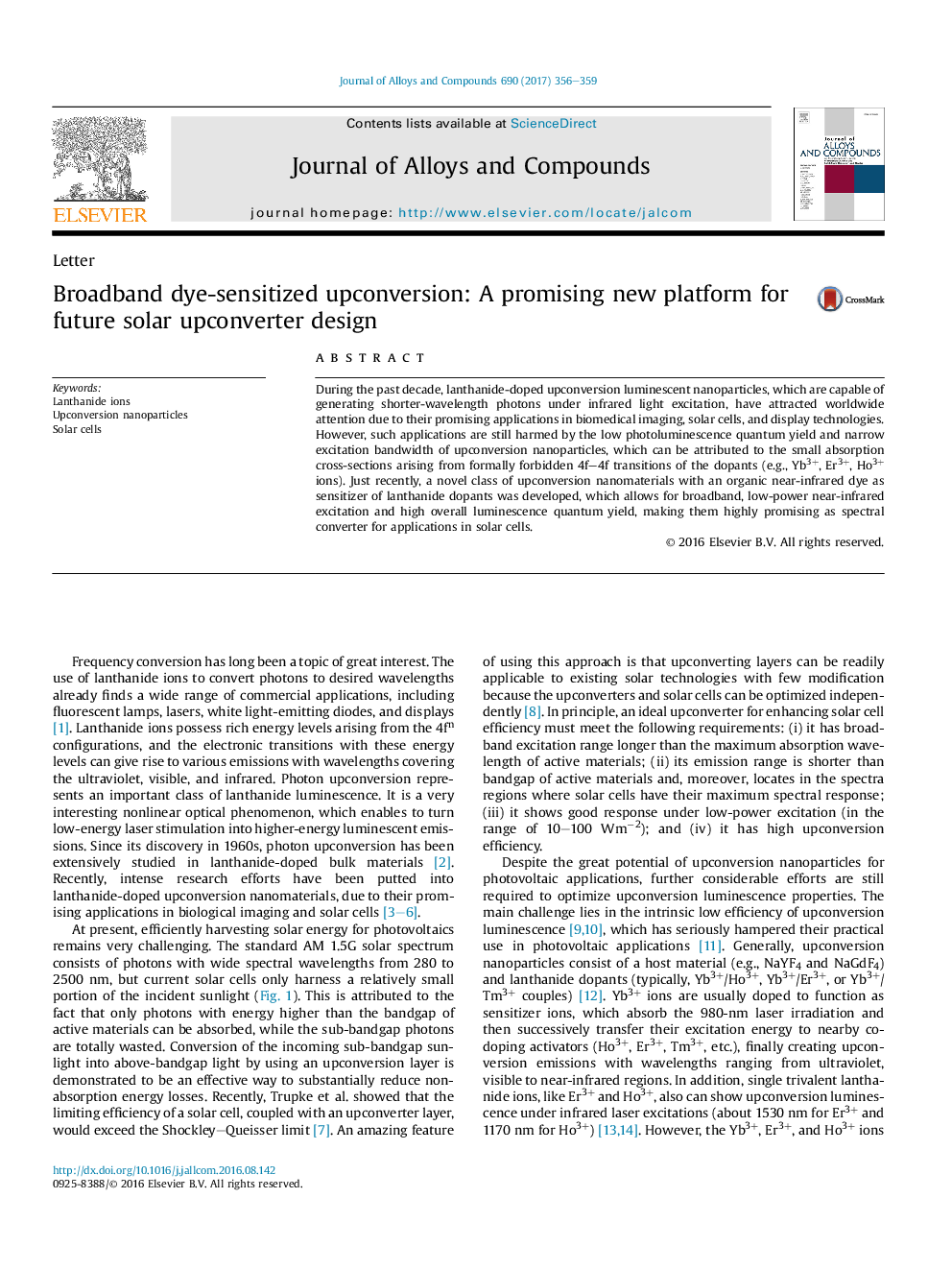| Article ID | Journal | Published Year | Pages | File Type |
|---|---|---|---|---|
| 1604930 | Journal of Alloys and Compounds | 2017 | 4 Pages |
•Lanthanide-doped upconversion materials for various applications are highlighted.•The progress of upconversion nanomaterials for solar cells are summarized.•Recent advances in dye-sensitized photon upconversion are reviewed.
During the past decade, lanthanide-doped upconversion luminescent nanoparticles, which are capable of generating shorter-wavelength photons under infrared light excitation, have attracted worldwide attention due to their promising applications in biomedical imaging, solar cells, and display technologies. However, such applications are still harmed by the low photoluminescence quantum yield and narrow excitation bandwidth of upconversion nanoparticles, which can be attributed to the small absorption cross-sections arising from formally forbidden 4f–4f transitions of the dopants (e.g., Yb3+, Er3+, Ho3+ ions). Just recently, a novel class of upconversion nanomaterials with an organic near-infrared dye as sensitizer of lanthanide dopants was developed, which allows for broadband, low-power near-infrared excitation and high overall luminescence quantum yield, making them highly promising as spectral converter for applications in solar cells.
Graphical abstractFigure optionsDownload full-size imageDownload as PowerPoint slide
